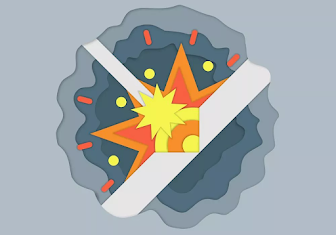International Conference on Welding Technology
11th Edition of International Conference on Welding Technology
https://welding-conferences.sciencefather.com/
Award Nomination - https://x-i.me/arunom
Abstract Submission- https://x-i.me/arumem
An overview of aluminum finishing

Editor’s Note: This article originally appeared in the July 2023 issue of Canadian Fabricating & Welding.
Aluminum is a nonferrous metal, meaning it contains no iron. It falls into the same category as a brass or bronze. From a hardness standpoint, it is considered very soft. This means it has a tendency to load up whatever consumable you are using when preparing it for welding or painting.
Therefore, the goal is to find a product that will make it more difficult to achieve those loading properties. Whether it’s a cutoff wheel, a grinding wheel, a coated product, or even a file, the goal is to create conditions in which the aluminum doesn’t gum up the abrasive.
Aluminum comes in many different grades, from very soft and malleable aluminum to a 7075 series, which is quite hard. Still, the properties of the material demand attention due to its softness.
Aluminum is a great conductor of both heat and cold. It transfers both readily, which is why it is used in products such as pots and pans—a stainless steel pan with an aluminum core will allow heat to transfer much quicker and more evenly. It also makes such a product lighter. Aluminum is used in everything from utensils to shipbuilding, where weight is a concern.
From a safety standpoint, working with aluminum using abrasives creates aluminum dust, which can be very explosive. It’s important to have safety in mind, using a downdraft table when possible and wearing proper PPE.
When choosing what tools to work with on your aluminum parts, from preweld part cleaning to polishing, you must take into account these basic material properties and address them effectively.

Preparing for Sheet Handling
If you are shearing your material in preparation for use, you will need to remove any sharp burrs on the sheet to handle it without risking injury. Commonly, shops choose to use a 50-mm flap disc along the edge. However, this also can be done using a file, which doesn’t require power or pneumatics. This approach is inexpensive, and it does not create airborne particulates.
Cleaning the Aluminum Sheet
When most people think of oxidization, they think of rust on carbon steel. However, every material rusts in its own way. Aluminum has a tendency to turn a gray-white color. Preparing your material requires removing that oxidized layer to reach the base.
Brushes are the ideal tool for this. It’s important that it be a stainless steel product. If you use a carbon steel brush on aluminum, it can become embedded in the material and affect the finish and any welds on that surface.
Brass brushes can be used, but make sure it is made with brass wire and not brass-coated wire. Brass-coated wire is less expensive, but it will contaminate the base material once the coating wears off.
If you are looking for a brush, you have two different types of wire brushes to choose from: crimped wire brushes and knot-style brushes. In cleaning and prep work on sheet, round, or square stock, a crimped wire brush in either a cup or bevel form is ideal. The wires on the brush pick at the contamination, lift it, and release it. On the other hand, a knot brush picks up and holds the contaminants, which you do not want.
A bevel-style brush can be particularly useful if you are working on a larger surface. For very large surfaces, say 1.75-in.-thick plate used to build aircraft carriers, a much larger cup-style brush is an ideal option. The key is that you want to keep the surface dimensionally similar to where you started.
Preparation for Aluminum Welding
If you are preparing to do a butt weld, it is necessary to perform a bevel. Traditionally, the first option is to use a stock grinding wheel to grind those bevels in. The thickness of the plate dictates what kind of angle is necessary and how deep that angle needs to be. Given that this is an approach that depends on the force applied by the operator, angles will differ a little bit.
Another option is to use a flap disc. This requires the use of a coated abrasive rated for aluminum. Ceramic oxide discs are popular for this because they have many more fracture points built into the design, so that it breaks down slower than a standard aluminum oxide disc. With any disc you use, however, it’s important that it have a lubricant or top side coating to cut down the friction and, in the process, the heat generated.
Heat is always the enemy; it not only affects the base metal, but it also affects the consumables. With the proper coating, the abrasive disc runs cooler, preventing the material from sticking as quickly to the abrasive material.
#welding #fabrication #metalwork #welder #iron #weldernation #tools #WeldingDescription #Aluminum #TigWelding #Cutting #Fabricate #StainlessSteel #WeldingEquipment #Oxy #FabricationShop #weldingblanket #weldingbook #weldingengineer #tigwelding.

Comments
Post a Comment